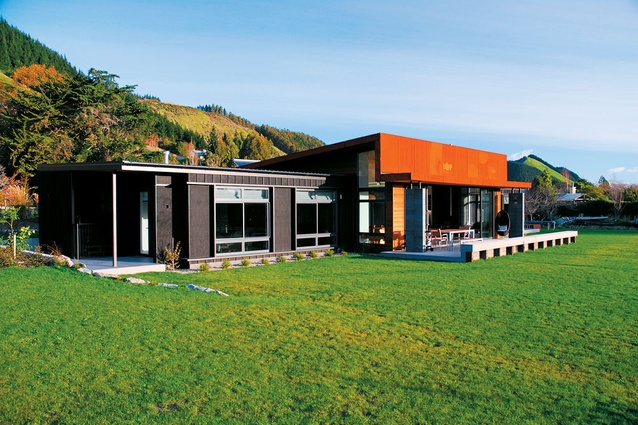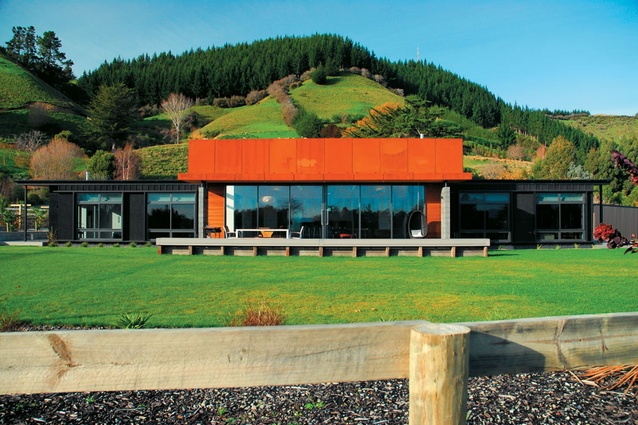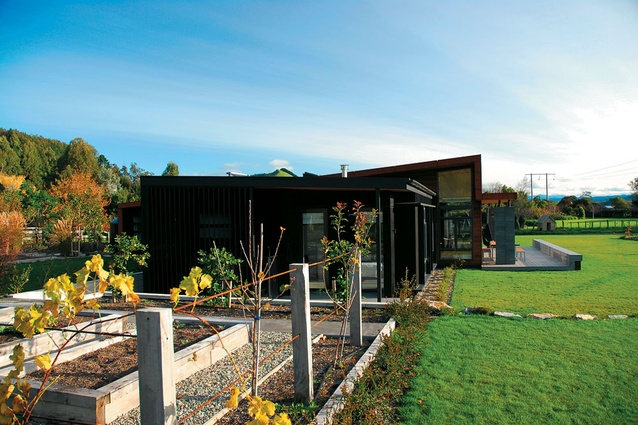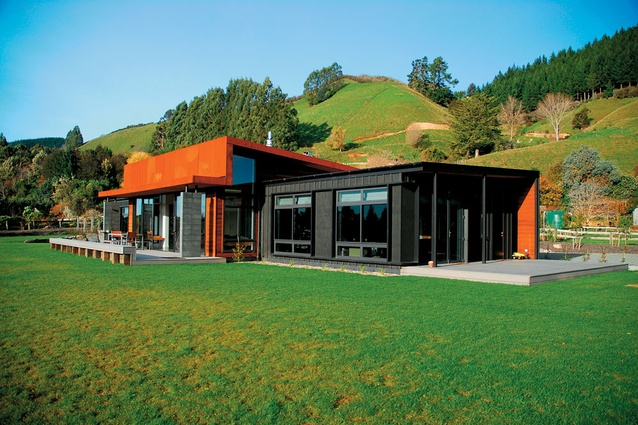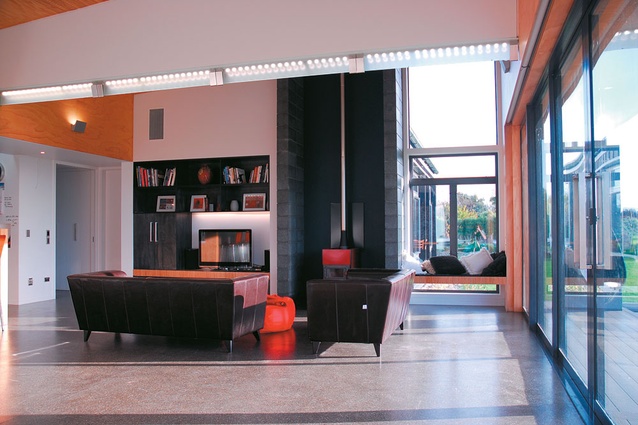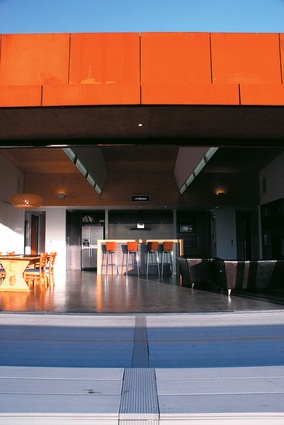Houses Revisited: Richmond house
A house at the foothills of the Richmond Ranges, designed by architect Guy Herschell, finds inspiration from local forms, first published in 2011.
This family house, designed by architect Guy Herschell, sits nestled beside the low hills of the Richmond Ranges, in the Waimea Plains at the top of the South Island.
Herschell’s clients owned the property behind, from which the current site is sub-divided, so they were familiar with the conditions of the area. They had already spent some time thinking about how the plan for the house might look and were very involved in the design process.
The clients are a winemaker and an artist with two children. Winemaking has a strong connection with the land and this came through in the clients’ philosophies when they discussed the location and the qualities that they wanted the house to have.
They wanted an eco-friendly house, with architectural merit and a strong relationship with the land. It also needed to be user friendly for children and have lots of options for future expansion.
The house is designed to reflect the textures of the local environment. It has the feel of a rural barn. Bright orange rusted metal cladding wraps the middle section of the roof, covering the central living core. The surrounding landscape is dotted with farm utility buildings and rusting and decaying hop sheds. The materials were used to mirror these forms, says Herschell.
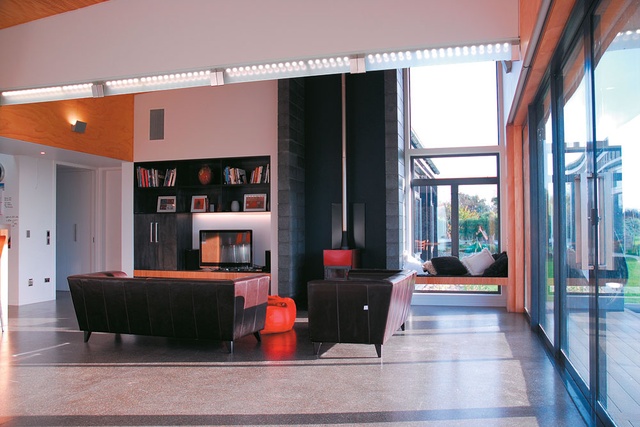
Underneath the dramatic black-stained plywood and rusted metal of the exterior, Herschell wanted the interior to be a polished living space. It has creamy paint tones, with pale timber, set against polished and honed block and a smooth concrete floor.
The plan has three parts: the childrens’ wing, parents’ wing, and a central area with services, a gallery, entry space, and a wine wall. The entry is flanked on one side with a gallery wall and on the other a wine wall. This way guests are presented with what the clients’ interests are as soon as they enter, says Herschell.
There are a range of environmental controls, including passive solar principles, applied throughout the house and a range of direct controls including low tech solutions such as air ducting systems. It is orientated so that the verandah cuts off the sun at a certain angle – which prevents overheating in summer.
The architect and clients have created a good looking, environmentally thoughtful house that sits very comfortably in its surrounds, and is set to age gracefully.
Click here to see more Houses Revisited. And sign up to our email newsletters to receive Houses Revisited straight to your inbox.
Note: These are stories from our archives and, since the time of writing, some details may have changed including names, personnel of specific firms, registration status, etc.

